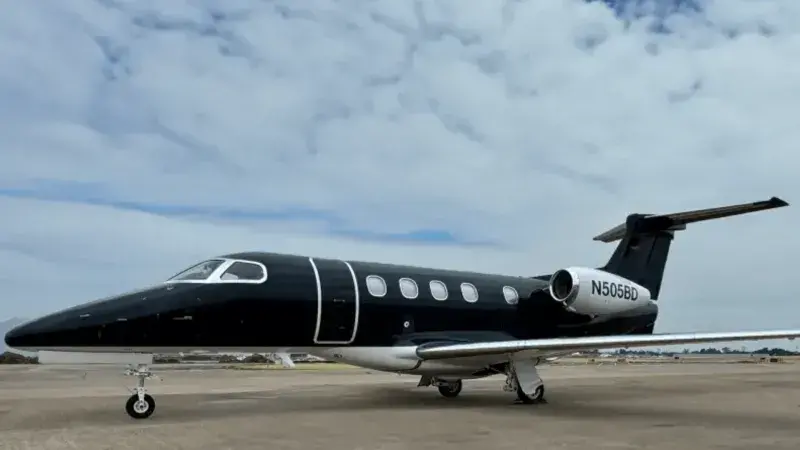The King Air 350: A Comprehensive Buyer's Guide (2025)
Published on 06/09/25

This guide gives you the straight answers on the King Air 350: how it performs, what it costs, and why serious operators keep putting it to work year after year.
What is a King Air 350?
The King Air 350 is a twin-engine turboprop built for buyers who need range, flexibility, and reliability, without the complexity or cost of a jet. It’s been in continuous production for decades because it works.
You’ll find it in charter fleets, corporate hangars, medevac operations, and private flight departments. It boasts modern avionics, cabin space for up to nine passengers, and the ability to operate easily out of shorter runways and remote airports.
King Air 350 Specs: Cabin Layout, Comfort, and Configuration
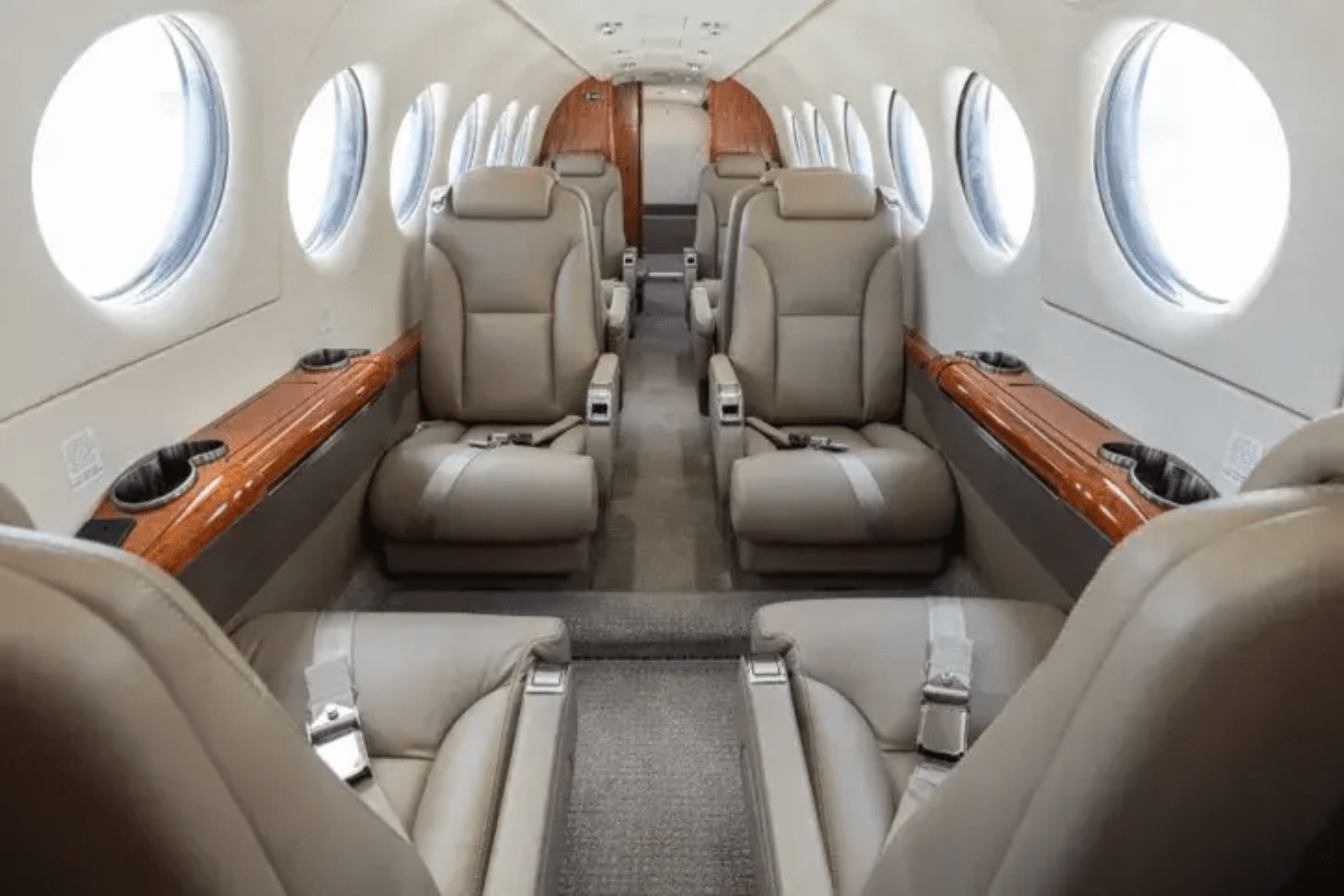
The King Air 350 stands out for cabin space and mission flexibility. It’s a turboprop, but it doesn’t feel like a step down from a light jet.
Seating Arrangements
The typical layout seats up to nine passengers, often in a double-club configuration with optional side-facing divans or belted lavs. That gives you space to work, hold meetings, or fly with family without feeling boxed in.
You’re not dealing with tight, upright VLJ-style seating here. The cabin’s nearly 19 feet long, which gives you real stretch-out room—ideal for more extended regional missions or multi-leg days.
Cabin Noise, Pressurization, and In-Flight Amenities
Cabin noise is low for a turboprop, especially in the 350i variant. Pressurization is solid enough to keep passengers comfortable on longer climbs, and upgrades in later models include acoustic insulation and touchscreen cabin controls.
In-flight amenities vary depending on age and spec, but many aircraft have refreshment centers, power outlets, adjustable lighting, and fold-out worktables. They’re functional, not luxurious—but that’s the point.
Pilot & Crew Considerations
Pilots appreciate the King Air 350's stability, short-field performance, and simplicity of avionics, especially with Pro Line Fusion or upgraded Garmin suites. You don’t need a jet rating, and it’s often flown single-pilot under Part 91.
Cabin access is easy, flight deck layout is logical, and the systems are intuitive for teams needing dispatch reliability over automation overload.
Aircraft Performance and Capabilities
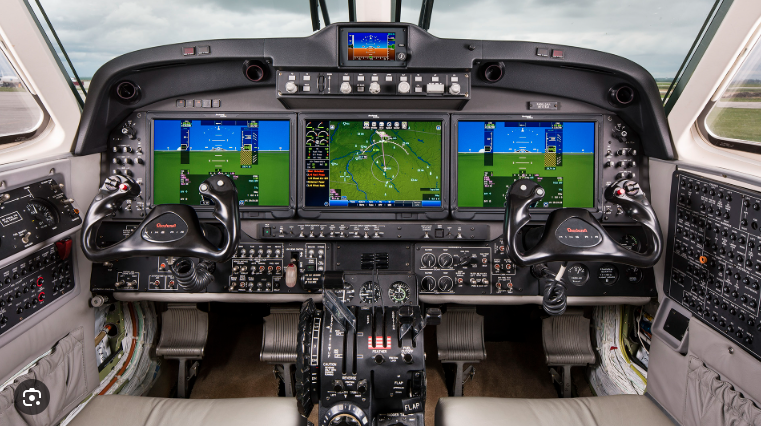
You’re not buying the King Air 350 for headline speed, you’re buying it for versatility. It can handle a broader range of missions than most light jets (shorter runways, mixed payloads, less infrastructure) and does so reliably.
Payload, Range, and Runway Access
The King Air 350 can carry a full cabin and clear shorter runways—often under 4,000 feet. That opens access to hundreds of airports that most light jets can’t touch. And with nearly 2,000 pounds of usable payload, you don’t have to sacrifice fuel for people or gear.
Takeoff distance averages around 3,300 feet at max takeoff weight. More impressively, landing distance often comes in under 2,700 feet. The aircraft’s max landing weight is around 15,000 pounds, giving operators flexibility.
Range sits up to 1800 nautical miles with full tanks and standard loads, depending on conditions. It’s enough for regional business travel, utility ops, or multi-stop client tours.
Speed, Climb, and Fuel Efficiency
The King Air 350 delivers a maximum cruise speed of roughly 312 knots—fast for a turboprop, especially given its fuel profile. Powered by Pratt & Whitney’s powerful engines, it offers responsive climb performance and stable cruise efficiency. The PT6 engine has been produced for 60+ years and is one of the keys to the stability of the aircraft.
Operating costs are where this aircraft wins big. Expect burn rates around 100–110 gallons per hour, depending on altitude and configuration. That adds up fast when you’re flying multiple legs a week!
How the King Air 350 Fits in a Fleet
For flight departments managing multiple missions—short-haul business trips, regional cargo, utility surveys—the King Air 350 fills gaps that jets can’t. It’s a workhorse that doesn’t need long runways, specialized crews, or ground-intensive support.
You’ll find it in government fleets, Part 135 ops, and private hangars. It also complements a corporate flight department looking to balance mission flexibility with cost control. The 350 adds operational value with lower overhead.
Model Variants
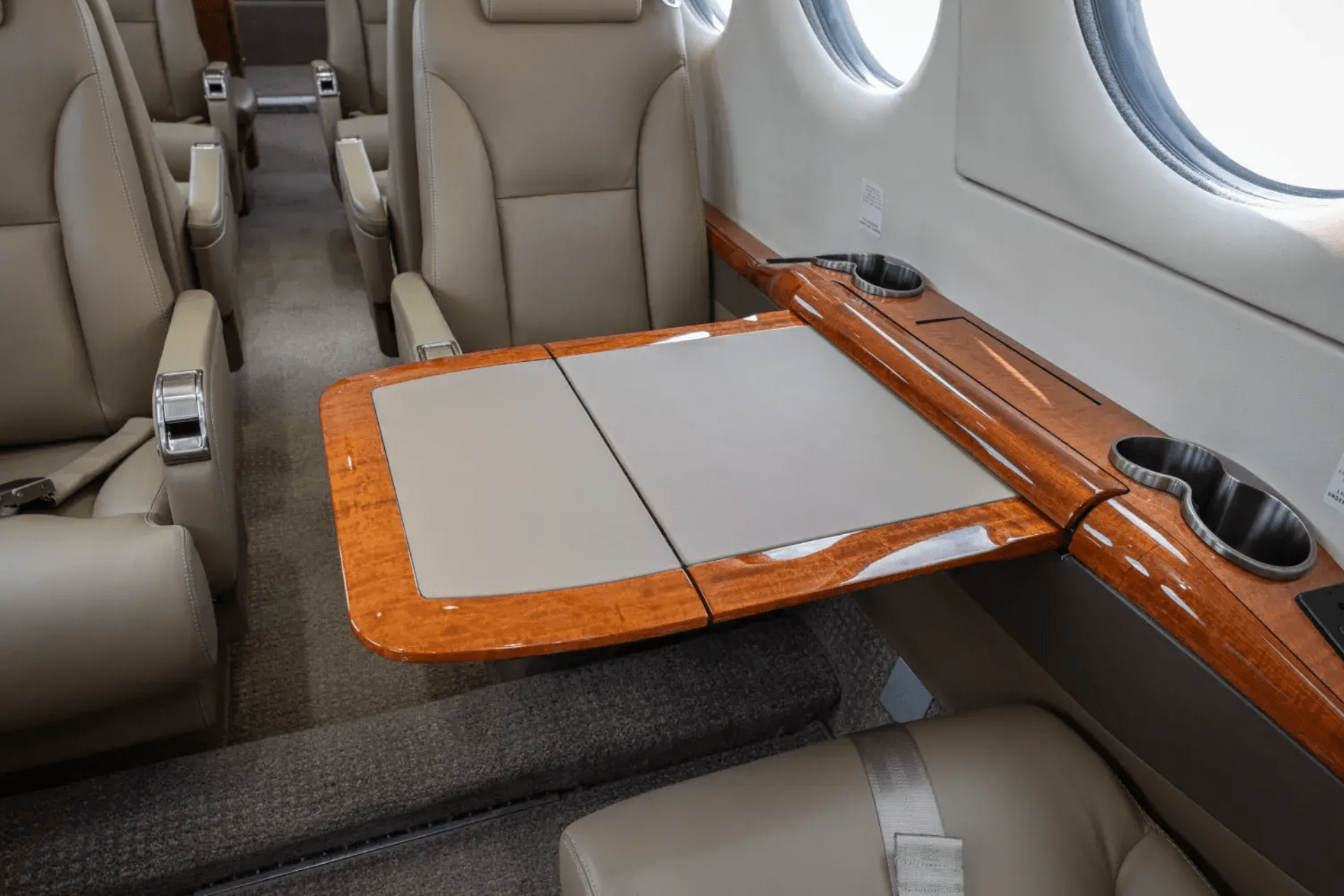
The King Air 350’s longevity isn’t just about durability but adaptability. Over the years, the platform has evolved into several variants serving different missions.
King Air 350 vs. 350i
The King Air 350i refined what operators already liked about the original. Cabin noise is lower thanks to better acoustic insulation. Pressurization is smoother. And a modern cabin management system gives passengers control over lighting, climate, and audio.
The cockpit saw upgrades, too. Most 350i models are equipped with advanced avionics, like the Collins Pro Line Fusion avionics suite, which simplifies workload and improves situational awareness.
Cargo and Medevac Configurations
Beyond passenger service, the 350 platform has proven itself in utility roles. Cargo variants remove seating to maximize payload and floor space, making them ideal for regional freight or sensitive material transport.
The medevac version is fully certified and widely used in both civilian and government settings. It supports stretchers, medical staff seating, and essential life-support systems—without sacrificing range or reliability.
Mission-Specific Modifications
This is where the 350 becomes a Swiss Army knife. Operators have modified it for roles ranging from aerial surveillance and border patrol to utility line inspection and environmental monitoring.
Many operators install quick-change interiors that convert between passenger and cargo use. That flexibility makes the aircraft a long-term asset, not just a single-mission solution.
Some 350s have also been modified with hyperspectral sensors for advanced imaging missions. These variants typically include a dedicated sensor operator station used in defense, environmental monitoring, or high-end surveillance roles.
The History and Legacy of the King Air 350
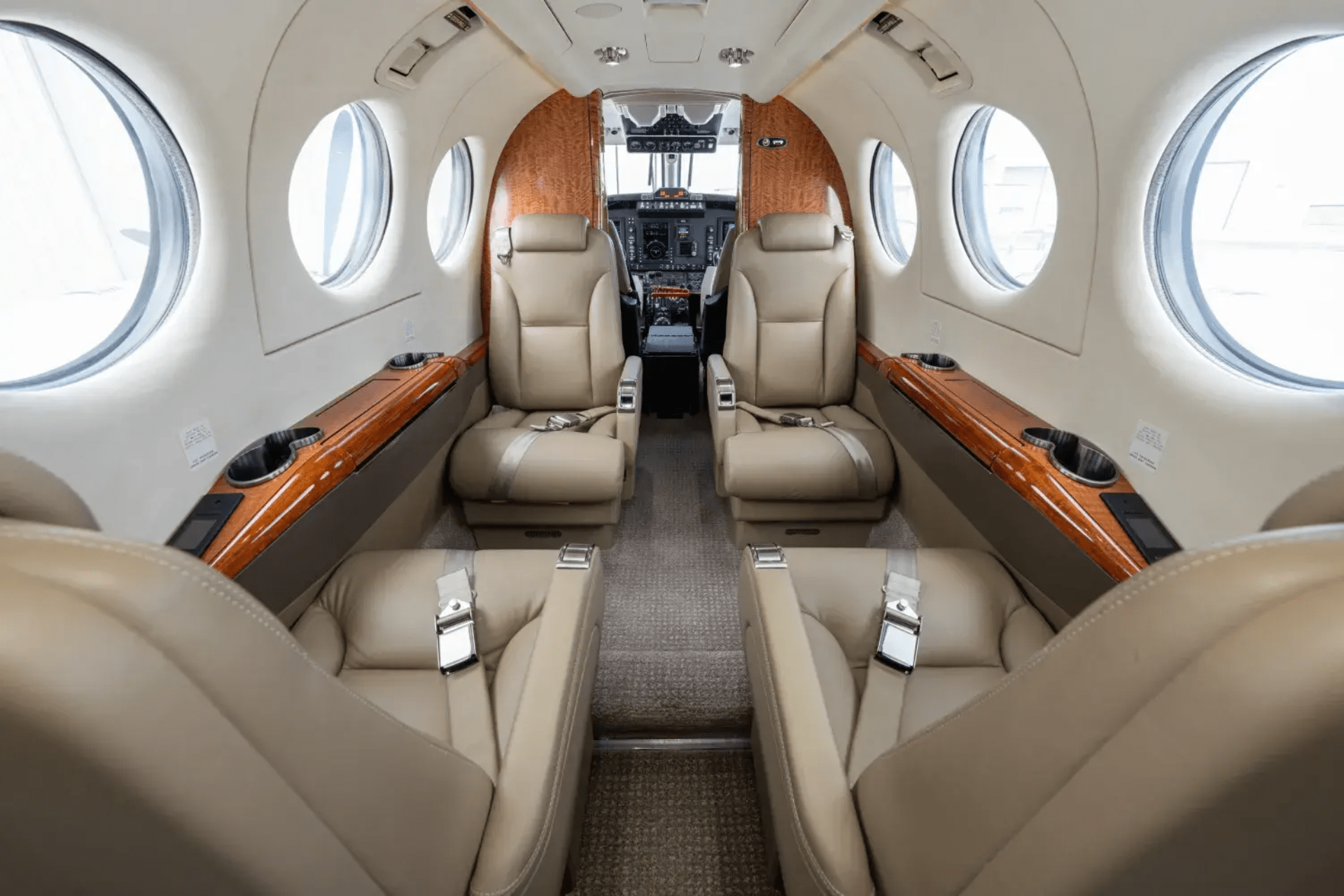
The King Air 350 set the standard for turboprop planes. Introduced in the mid 1980s as a stretched, upgraded evolution of the King Air 300, it was built to meet the demand for a more capable turboprop that could carry more passengers, fly farther, and do it from smaller airfields.
Over the decades, the King Air 350 has become the go-to aircraft for mission diversity, used in corporate, government, medical, and military settings worldwide.
It’s one of the few platforms that’s stayed relevant across generations without losing the traits that made it successful in the first place: durability, flexibility, and a cabin that works as hard as the airframe.
Who Flies the King Air 350 and Why
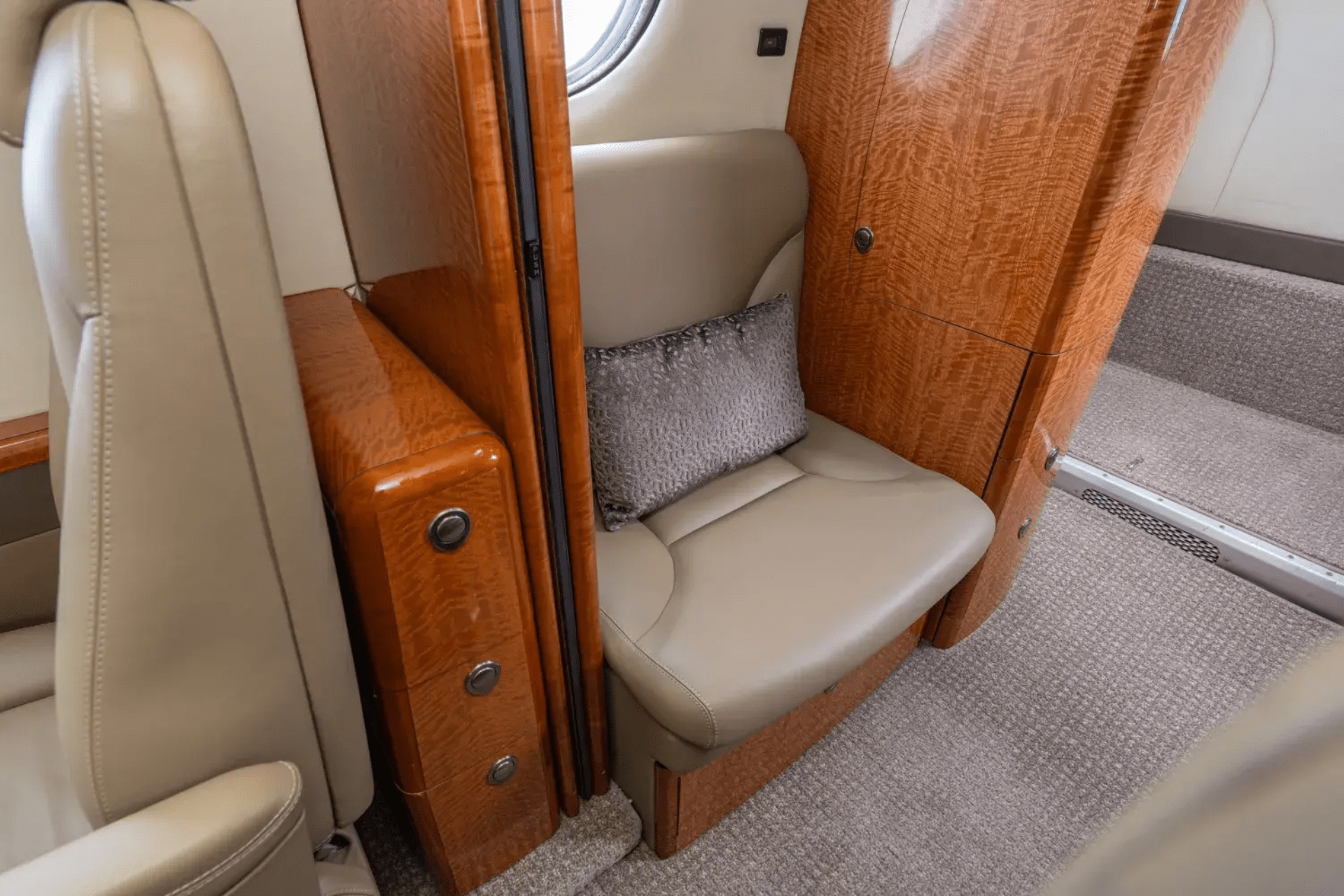
You don’t see this many King Air 350s in operation by accident. It’s a platform that works for professionals, not just in theory, but in practice.
Business Aviation
The King Air 350 offers jet-like cabin comfort for companies flying regional routes without the fuel burn. It handles office-to-office travel efficiently, especially when departure points include shorter runways or smaller fields.
Government, Charter, and Utility Ops
Government agencies use the 350 for everything from medevac to surveillance. Charter operators like it for its uptime and passenger comfort. And utility firms rely on it for inspections and personnel transport in places jets can’t reach.
Owner-Pilots and Regional Operators
The 350 is one of the few aircraft that appeals to owner-operators and regional carriers. It can be flown single-pilot, and gives owner-pilots the ability to cover serious ground without stepping up to jet-level costs.
King Air 350: Frequently Asked Questions
How much does a King Air 350 cost?
Depending on configuration and installed systems, the newest King Air 350 typically costs between $8.5 million and $9.5 million. Pre-owned aircraft can range from approximately $3 million to $7 million, depending on total flight hours, condition, and fixed cost programs already in place.
Does a King Air 350 require two pilots?
No, the King Air 350 can be operated on a single pilot under Part 91. Still, many fly with two pilots to reduce workload and meet insurance or aircraft operations policies for dual-crew environments.
How far can a King Air 350 fly?
The King Air 350 has a maximum range of about 1,800 nautical miles under optimal conditions, with a standard range of roughly 1,500 nm carrying a typical payload. It also offers a ferry range of up to 2,400 nm when flown empty with maximum fuel.
Does a King Air 350 have a bathroom?
The King Air 350 includes an aft lavatory with a privacy partition. It’s a basic but functional setup, common for aircraft in this category.
Is the King Air 350 reliable?
The King Air 350 is one of the most trusted turboprops flying today. Its Pratt & Whitney turbine engines are known for durability, and the aircraft’s design keeps operational costs lower than most light jets. The PT6 engine has been produced for 60+ years and is one of the keys of the stability of the platform. With strong support and a long track record, it remains a favorite in high-utilization fleets.
Talk to 5x5 Before You Buy a King Air 350 Jet
Buying the right aircraft starts with better information. No pressure. No inventory bias. Just a clear-eyed conversation with a senior advisor who knows the 350 inside and out. Let’s get the conversation started.
